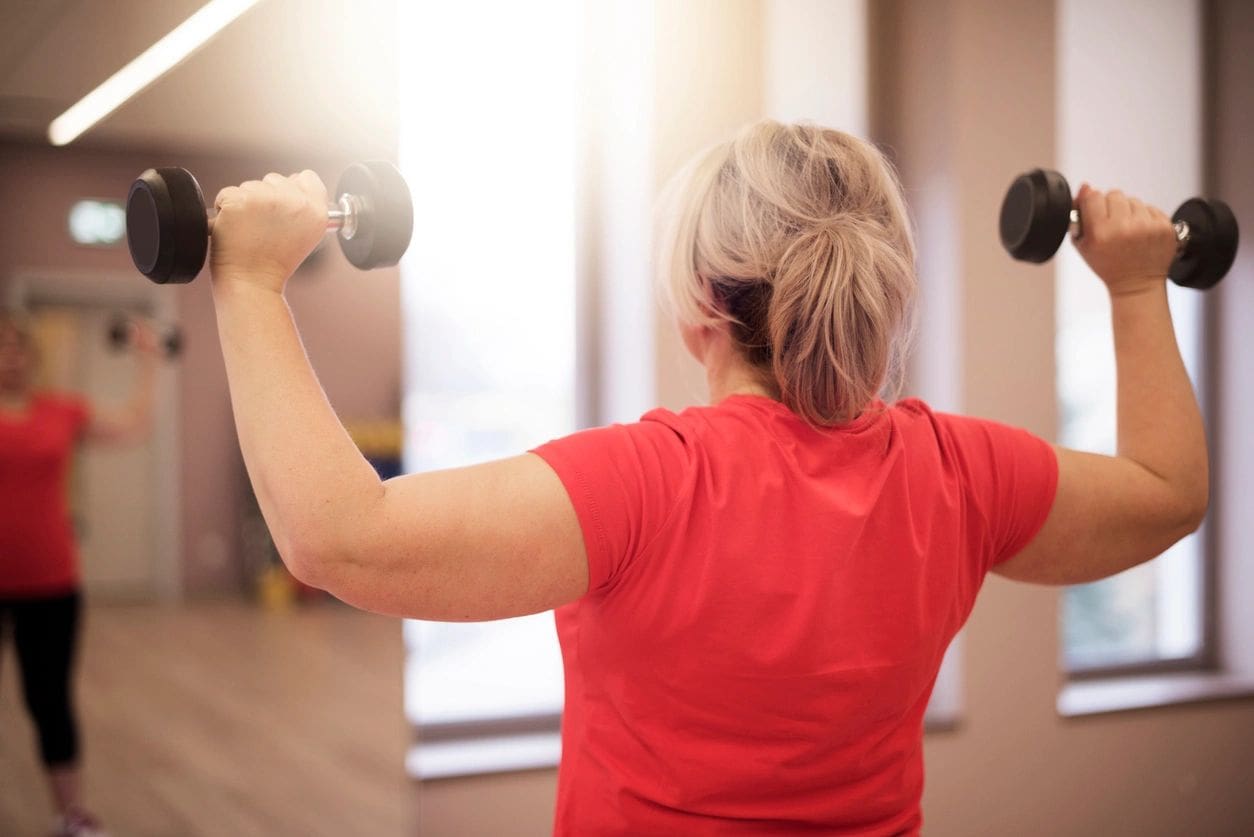
Overhead Press: Form and Technique

Purpose:
Overhead lifting press is a functional exercise improving pushing strength, while lifting objects overhead. We use overhead presses in everyday life from putting kitchen wear away to playing with a child; The carry over is endless. Improving your form and strength improves the longevity of your shoulder health.
Muscles Involved:
The primary mover with overhead movements are your deltoids, pecs, triceps, rotator cuff and scapular stability muscle groups.
Technique:
Start with weight about shoulder height, engage core, drive weight directly overhead, moving head out of path of barbell. End with shoulders completely extended. Soft knee with engaged lower body and abdominals when standing will protect knees and lower back.
Tips:
- Maintain tucked chin and rib cage (core engaged)
- Shoulder blades engaged throughout movement.
Common Errors:
- Flared ribs- this is a sign of a disengaged core
- Too much weight- leads to compensation and injury
Common Injuries:
- Pinched nerve in neck: When compensating/poor form, puts abnormal stress on neck leading to shift in vertebrae that puts pressure on a nerve
- Rotator cuff pathology: Weakness in scapular stabilizers/ poor posture/lifting form leading to increased pressure on rotator cuff.
- Labral tear: Abnormal load on passive structure in shoulder causing tear from poor lifting form.
- Neck Strain: Overengaging neck muscles to stabilize vs scapular and rotator cuff muscles.
Types of Overhead Lifts:
- Barbell
- Sitting– This is a good way to decrease lower extremity compensation when lifting
- Standing– This increases core engagement with lift.
- Dumbell
-Strict press-Can be complete with palm facing each other or palms facing forward.
-Arnold press-Multi-direction movement: working on control with strengthening
- Kettlebell- Leading to increase shoulder stabilizer engagement 2/2 uneven weight
Exercise in conjunction with Overhead Press:
- Rotator cuff strengthening:
– Sidelying ER with weight, Internal/External Rotation with band
- Scapular Stabilization:
-Rows with band, prone and standing Y, T and W’s with weights/bands
Physical Therapy Intervention:
- A physical therapist is trained in rehabilitation and movement restoration. A PT will evaluate your movement patterns and perform specific special tests to isolate the reason for your individual movement abnormality. Once isolated, the PT will design a specific program to improve your mobility and strength deficits.
- Physical therapists can facilitate increased motion with mobilizations to various joints while also freeing up soft tissue restrictions with myofascial release. Dry needling is another way a PT can reduce pain and increase range of motion and mobility. Other techniques are utilized to increase muscle activation and strengthen stabilizing muscles that are commonly overlooked at the gym.
- Physical Therapists can work on cervical and shoulder issues secondary to Overhead Press. Along with appropriate manual therapy they would issue the appropriate exercises to work on shoulder, cervical and scapular stabilization and strength. They would also address form issues with the Overhead Press.
Contact Us:
If you are experiencing problems as a result from an overhead press or just have questions on form and injury prevention, Physical Therapy can help. Please contact the experienced physical therapists at Dynamic Physical Therapy – Chicago and Follow and Like us on Instagram and Facebook. Also, subscribe to our You Tube Channel for the above exercises and many more!
Please call (312) 643-1555 or email [email protected] with any questions or to schedule your consultation today.
